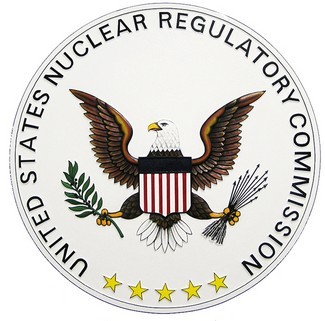A major problem with government oversight of the commercial sector is something called regulatory capture. The idea is that a government agency that is supposed to be an independent watchdog for the public interest becomes a lapdog for the industry that it is supposed to regulate. This has probably been a problem for as long as there have been governments and businesses. The nuclear industry is no exception and the huge amount of money invested in construction and operation is motivation enough for the nuclear industry to do its best to turn the United States Nuclear Regulatory Commission into a tame and toothless regulator.
The NRC sets standards for procedures, designs and materials used at nuclear power plants. The Browns Ferry plant in Alabama suffered a fire in 1975 that destroyed the electrical wiring for the coolant control system. In 1980, the NRC issued new regulations for fire protection as a result of the Browns Ferry fire. In the face of complaints from the nuclear industry that proven brand name fire barrier materials were too expensive, the NRC approve a series of substandard fire barrier materials over the next 30 years. In 2010, a report was issued by the NRC that claimed that they had finally solved the problem of adequate fire barrier materials but most plants in the US have not complied with the new rules..
When nuclear reactor operators encounter problems at their facilities that could lead to release of radioactivity, they are supposed to report them to the NRC but they often don’t. They may falsify records of equipment and facility tests or they may change their own specifications for what they consider to be safe. Exelon Corporation knew that the pipes that circulate coolant at the Bryon nuclear power plant in Illinois were being corroded and getting thinner and thinner. The pipes should have been replaced but Exelon kept reducing the thickness that was required safe instead. The NRC failed to inspect the pipes for eight years before one of the pipes was broken in a routine cleaning operations in 2007. The NRC also failed to notice that Exelon was repeatedly reducing what it considered to be the safe thickness. In an emergency, these thin pipes could have led to a serious release of radioactivity. When the problem was uncovered, Exelon only got a low level reprimand from the NRC.
Top officials of the NRC are drawn from the nuclear industry and often return to it after their time at the NRC. There are ethical standards that require NRC officials to recuse themselves from decisions that would affect the profits of companies with which they have connections. There have been situations where NRC officials have worked on cases involving companies which they had previously contacted seeking employment when they retired from the NRC. This is a blatant conflict of interest but they are seldom confronted or prosecuted over such lapses.
In Vermont, the state government denied a license extension to the Vermont Yankee reactor which had had a lot of operational problems. The owners of the reactor appealed to the NRC which granted the license extension. A legal battle followed which is still in process. In confrontations with the NRC, reactor operators have been able to get the NRC to back down on regulatory demands. Some of the commissioners who have been appointed to the NRC have strong industry ties and have been vocal proponents of nuclear energy before coming to the NRC.
There is evidence that the situation has been improving and the recent safety record of the nuclear industry has been better than in years past. However, there are still a lot of reasons to be concerned that the NRC has been and continues to be a victim of regulatory capture. With the possibility for horrible disasters from nuclear reactor accidents, this is not acceptable.
